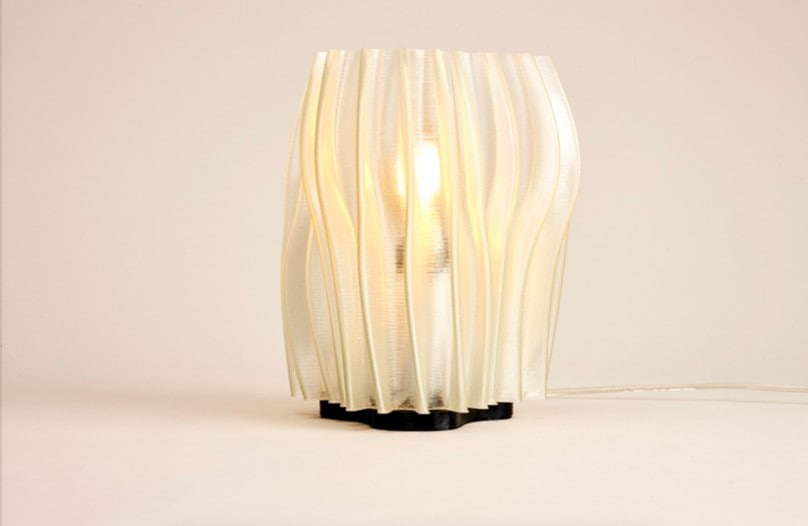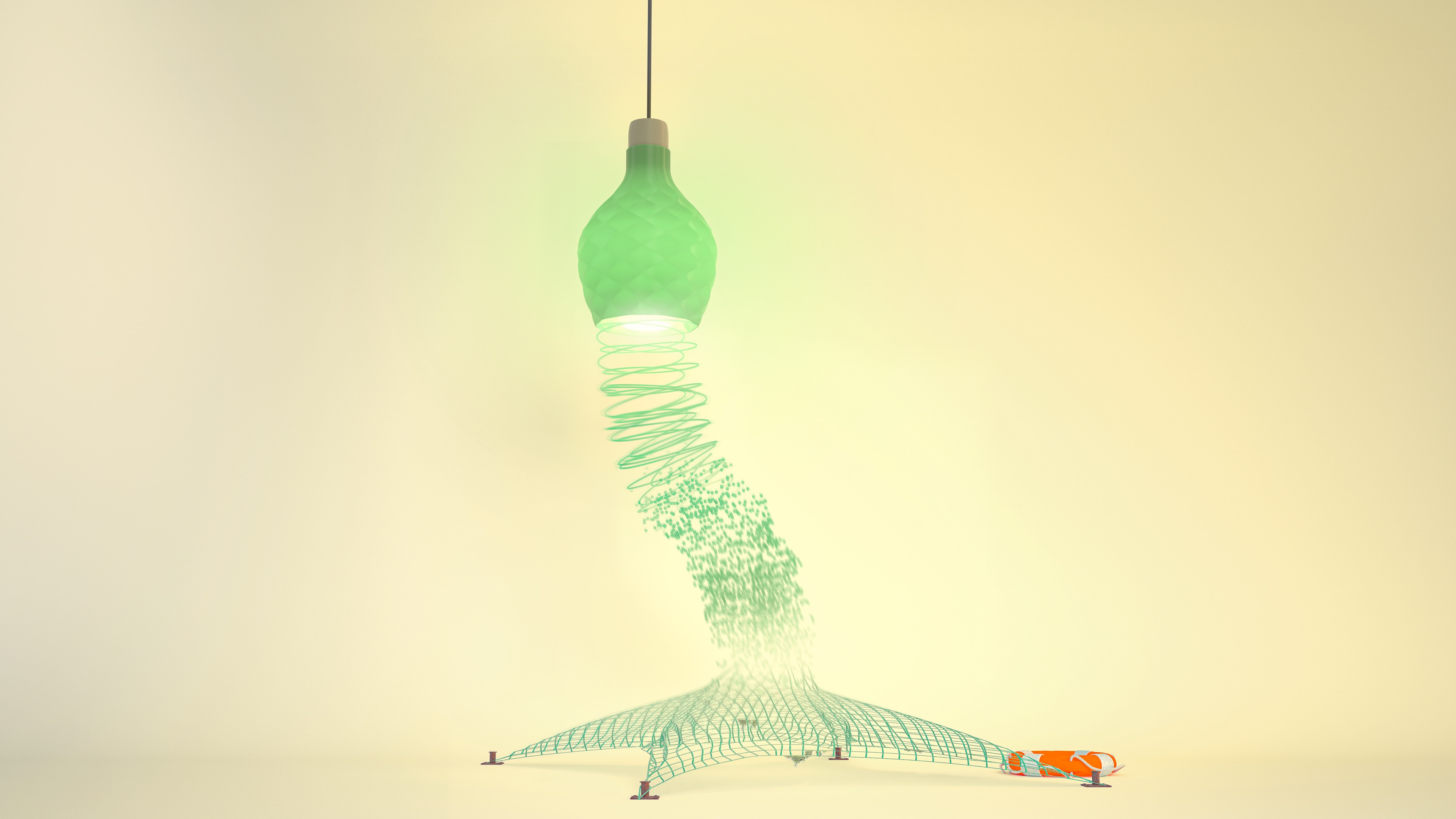February 26, 2024
February 26, 2024
Just as AI has the potential to transform lighting, so does 3D printing. What’s more, it is a technology that promises to accelerate lighting’s sustainability and circularity ‘journey’.
Moving to a circular economy means moving away from linear production and consumption models, models where things are used for a short time and thrown away after use, toward a more circular process. Circularity can include practices such as refurbishing, repurposing, redistributing, and other strategies that extend the lifetime of products.
With sustainability and circular economy in mind, we need to contribute to more responsible consumption of resources; currently we are consuming more resources than our planet can sustain. A huge amount of what we consume ends up being dumped in places that it shouldn’t. Moving to 3D printing can, arguably, help us shift to an economy that reuses resources wherever possible.
3D printing, to my mind, is the production technology that is no longer of the future and is a fantastic example of circularity. 3D printing is more relevant than ever as a solution to three major sustainability challenges: contributing to a circular economy, reducing CO2 emissions, and eliminating waste.
3D printing is a form of ‘additive manufacturing’ that creates 3D objects from a digital file. Additive manufacturing is where an object is made by laying down successive layers of material until the object is created.
Each layer is therefore a thinly sliced layer of the total object. 3D printing is the opposite of ‘subtractive manufacturing’, which is the process of cutting out or hollowing out a piece of material.
It enables you to produce complex shapes using less material than traditional manufacturing methods. It is believed that 3D printing can have a similar impact on the lighting market as LED did. And a large part of this impact is by making products in a much more sustainable way. So, how does 3D printing make manufacturing more sustainable?
LOWER CARBON EMISSIONS
In terms of material supply and manufacturing, 3D-printed luminaires have lower carbon emissions; there is also a reduction of carbon emissions in transportation because the 3D printed product is lightweight and can be printed at locations closer to the end user
In fact, when you compare the carbon savings in the manufacturing process, we find that, when all parts are included, there can be very large savings of up to 76% at the manufacturing stage alone and a further 28% through the transportation network.
3D-printed luminaires of course use LED technology and so are highly energy efficient, with savings up to 70% compared to conventional technologies. The lightweight and high recyclability of 3D-printed luminaires also reduces carbon emissions at end of life.
The polycarbonate can be recycled and, because 3D printing uses no paint, screws or glue, it makes them much easier to recycle than traditional luminaires.
The starting point of all designs is that as many parts of the luminaire as possible are printed. This makes it easy to recycle and easy to install. To take as an example this was designed to enable you easily to switch the 3D printed shade, without requiring an electrician.

As well as benefits relating to sustainability, a further benefit of 3D-printed luminaires is that the solution can be tailored to your project, whether that be the shape, colour or texture of the product. Allowing co creation and customisation of products providing design freedom.
This can allow you to help brand your space by using unique fittings, but it can also serve a functional benefit as well. For example, when organisations try to switch from conventional lighting to LED what can sometimes occur is that the fixture being replaced may not be the same size as an LED alternative.
This can mean that additional items are required, such as adaptation rings or expensive changes to the ceiling. Using 3D printing this problem can be solved. Take as an example LED downlights in a 3D-printed housing.
The size of the housing can be changed at the point of ordering, meaning you can be sure it will fit the exact measurements of what you’re replacing. This can also help shorten the time an installation takes because there are no further adaptations to be made on site, which will, in turn, minimise the disruption to your organisation and save on labour costs.
USE OF RENEWABLES
3D printing can play a major further part in supporting our journey to circularity as instead of using virgin materials for production of goods using fossil fuel resources, renewable plastics can be utilised from biomass or natural waste, such as residual fats and vegetable oils. In addition 3D printing can also use recycled materials from waste streams such as Post Industrial Recycling (PIR) waste from manufacturing processes or Post Consumer Recycling (PCR) the recycling of used goods. Such as polycarbonate building materials for example sheets for car ports, swimming pools or illuminated advertising from the PIR waste stream. Or plastic bottles, aluminum cans, packaging material, CDs, and nylon recycled from fishing nets from the PCR waste stream. In fact, it is possible to use least 55% renewable or recycled content as input for the 3D printing process.
These table lamps shown on this page, for example, have been printed using some of the 200 billion CDs that have been made worldwide; each table lamp is made from approximately 24 recycled CDs, which equates to 70% of the luminaire.


IN CONCLUSION
In summary, 3D printing allows the creation of bespoke products whilst contributing to circular economy.
3D-printed lighting products have at least 55% circular content, with up to 40% fewer components, which are easy to disassemble and can be produced from 100% recyclable materials.
3D printing results in 76% lower carbon emissions in the material supply and manufacturing alone and further 28% from transportation. The elimination of waste plays a vital role with products printed on demand, using waste to create new products whist working towards a zero-waste production. So, what’s not to like? Will you make the switch to 3D printed luminaires?
For editorial enquiries:
Signify UKI PR Manager
Nikita Mahajan
Email: Nikita.mahajan@signify.com
Signify (Euronext: LIGHT) is the world leader in lighting for professionals and consumers and lighting for the Internet of Things. Our Philips products, Interact connected lighting systems and data-enabled services, deliver business value and transform life in homes, buildings and public spaces. In 2022, we had sales of EUR 7.5 billion, approximately 35,000 employees and a presence in over 70 countries. We unlock the extraordinary potential of light for brighter lives and a better world. We achieved carbon neutrality in our operations in 2020, have been in the Dow Jones Sustainability World Index since our IPO for six consecutive years and were named Industry Leader in 2017, 2018 and 2019. News from Signify is located at the Newsroom, Twitter, LinkedIn and Instagram. Information for investors can be found on the Investor Relations page.
